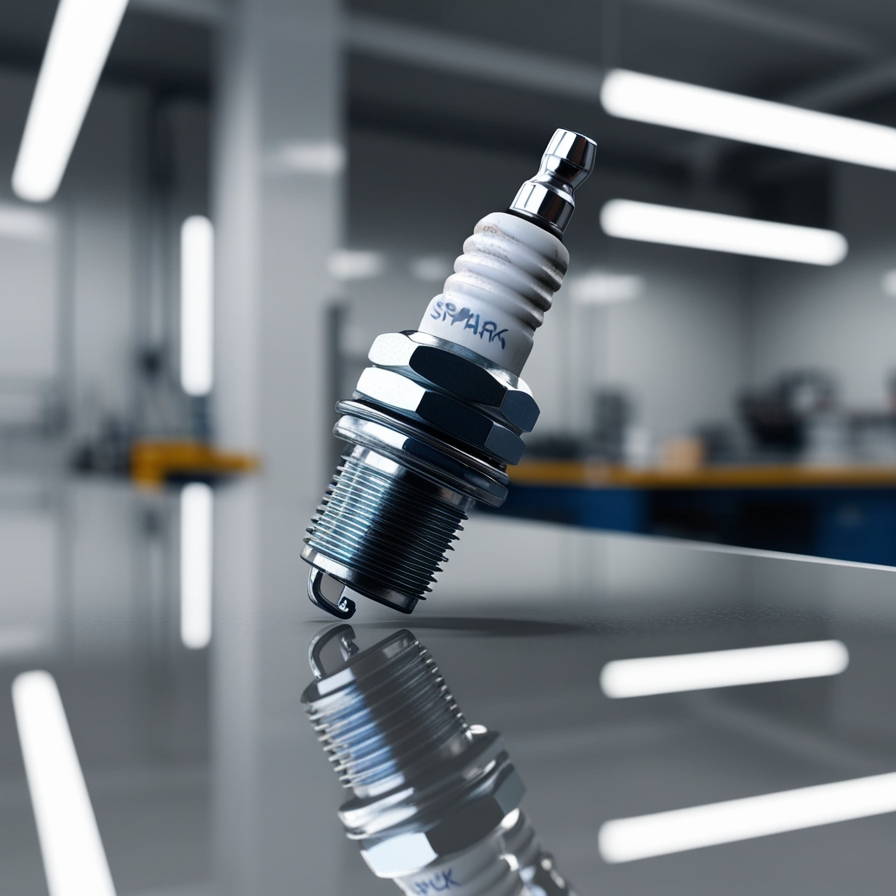
Spark plugs are vital for the efficient operation of gasoline engines, igniting the air-fuel mixture within the cylinders. Despite their small size and simple design, they play a crucial role in your car's performance and require regular attention to ensure the engine runs smoothly.
Why Spark Plugs Need Regular Replacement
Car manufacturers set specific guidelines for the lifespan and type of spark plugs suited for their engines. These recommendations are based on extensive research and testing to ensure optimal engine performance and longevity. Using the correct spark plug type is essential; replacing the original plugs with aftermarket or different models can lead to serious engine problems. Incorrect spark plugs can cause issues like improper ignition timing, leading to engine knocking or pre-ignition, which can damage internal components.
Each type of spark plug has unique characteristics, including the design of the sealing gasket, electrode material, and the height of the ceramic insulator around the central electrode. These features are tailored to meet the specific requirements of different engines. For instance, using spark plugs with an incorrect heat range can result in inadequate self-cleaning of the plugs, leading to carbon build-up. Conversely, if the plugs run too hot, they may cause pre-ignition, which can severely damage the engine.
The Impact of Driving Conditions on Spark Plug Life
The actual lifespan of spark plugs varies significantly based on driving conditions. For example, a vehicle frequently driven at high speeds on highways may experience different wear patterns than one primarily used for short trips in city traffic. The number of sparks generated between the electrodes per mile can differ greatly under these varying conditions. Urban driving, with its frequent stops and starts, can accelerate the wear of the spark plugs due to the higher number of ignition cycles.
The erosion of the electrodes over time increases the spark gap, making it more difficult for the ignition system to generate a spark. This can lead to misfires, poor fuel economy, and increased emissions. In severe cases, it can cause the ignition coil or spark plug wires to fail, leading to more expensive repairs.
Recognizing When to Replace Spark Plugs
There are several signs that your spark plugs may need replacing. One common indicator is a noticeable decline in engine performance, such as rough idling, misfires, or reduced fuel efficiency. Additionally, a check engine light might illuminate on the dashboard. In some cases, you might hear knocking or pinging sounds from the engine, especially during acceleration.
A practical way to check the condition of your spark plugs is to inspect them physically. Removing a spark plug and examining it can provide valuable insights. If the electrodes are worn down, or if there's significant carbon build-up, it's time to replace them. Another method is to check the exhaust emissions. Place your hand near the exhaust pipe; if the exhaust is smooth and steady, the spark plugs are likely in good condition. However, if you feel irregularities or hear popping noises, the spark plugs might be failing.
Choosing the Right Spark Plugs
The choice of spark plugs can significantly impact your vehicle's performance. Modern spark plugs are made from various materials, including copper, platinum, and iridium. Copper spark plugs are the most affordable but have a shorter lifespan. Platinum and iridium plugs are more durable and can withstand higher temperatures, making them suitable for high-performance engines. Additionally, some spark plugs feature multiple electrodes, which can enhance durability and spark efficiency.
For most vehicles, especially those driven under normal conditions, platinum or iridium spark plugs are a good choice. They offer a longer lifespan and better performance, which can justify their higher cost compared to copper plugs. It's important to consult your vehicle's manual or a professional mechanic to choose the right type of spark plug for your engine.
Maintenance Tips and Best Practices
Regular maintenance of your vehicle's ignition system, including timely replacement of spark plugs, is crucial. Following the manufacturer's recommendations is key to ensuring your engine runs smoothly. Typically, spark plugs should be replaced every 30,000 to 100,000 miles, depending on the type and quality of the plugs, as well as the driving conditions.
In addition to regular replacement, it's essential to check the spark plug gap during installation. The gap should be adjusted according to the manufacturer's specifications to ensure optimal performance. Using a torque wrench is also recommended to avoid over-tightening or under-tightening the plugs, which can cause damage or improper sealing.
Conclusion
Spark plugs are a small but vital component of your vehicle's engine. Regular maintenance and timely replacement are essential to keep your car running efficiently and to prevent potential engine damage. By choosing the right spark plugs and following best practices, you can ensure a smooth and reliable driving experience. Remember, taking care of your car's ignition system is an investment in the long-term health and performance of your vehicle.

